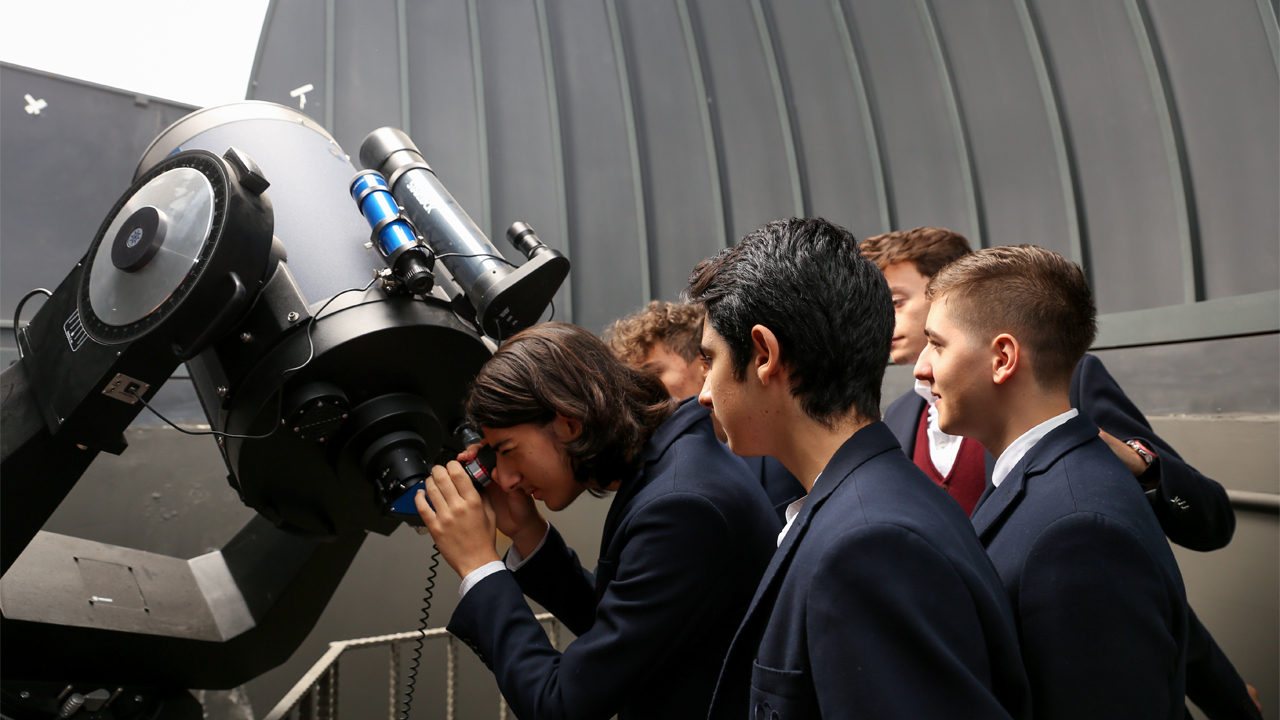Observatories

Two observatories are located within our school campus. Observatories house two portable solar telescopes and two fixed optical telescopes with 60 cm diameter mirror refractors. Each observatory building has two classrooms, providing our students with a practical learning space, as they are next to the telescopes.
As our observatories have a fixed optical telescope with solar filters put inside, students can safely study sunspots, explosions, and eclipses since the solar-filtered telescopes allow safe observations of Solar objects.
Thanks to the oculars (eyepiece) with various magnification powers (4-26 mm) and the Lunar filter, our satellite and thousands of faint objects can be examined in detail during night observations.
Astronomy classes are taught in the classrooms located at the observatories, and astronomy clubs are being held simultaneously at all grades from elementary school to high school. The course content of the astronomy classes has been in modules that lessons will be different at each grade level. A student who starts high school learns about all general astronomy topics until graduation.
Astronomy classes in our school are conducted separately from Science classes, with a curriculum developed by teachers who are experts in their field. The teachers of our kindergarten and primary school classes also use the observatories in the respective units to ensure that our students gain knowledge of astronomy at an early age and keep their interests alive.
The club activities are also specially designed and promoted with various activities, especially the learning of the uses of telescopes. Our students design models and prototypes in the design lessons, model their space technology designs, watch and discuss astronomy, and space-themed in the cinema hall located in our school. Club activities at the high school level are also held in the dormitory. In addition, our dormitory students are photographing the sky, thanks to the support of our school photographers, thus actively performing "astrophotography", one of the rarest fields of astronomy.
With the numerous books, journals, and open sources in the fields of astronomy and space in our library, our students also have access to theoretical knowledge.
